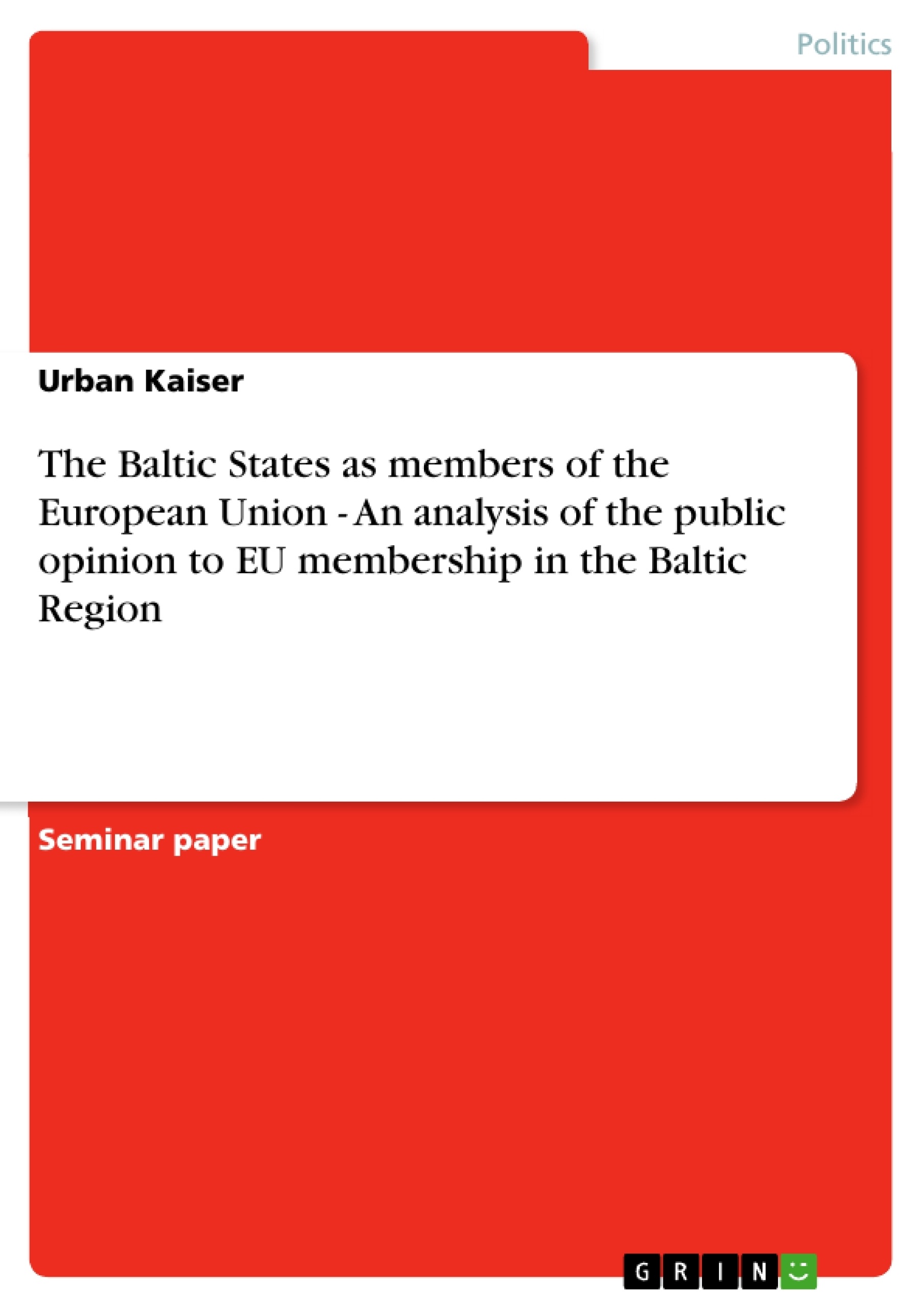The paper will be divided in two main parts: The first part is about the structures and the functions of the EU institutions. This presentation will be focused on three institutions of the EU: The European Commission, The Council of the European Union and The European Parliament, due to the fact that this “institutional triangle” produces the policies and laws that apply throughout the EU. Any of these institutions will be introduced in an own subchapter by explaining their composition, procedures and functions. [...] Important to mention is that the “Council of the European Union” should not to be confused with the “Council of Europe”, an organisation separate from the EU with a wider membership, or with the “European Council”, the meeting of the heads of state and government of the EU together with members of the Commission (Archer 2000:44). In the following the terms “Council” and “Council of Ministers” are only used as synonyms for “The Council of the European Union”. The presentation of the institutions of the EU will be followed by an overview about the EU accession procedures of the three Baltic States. This chapter will be introduced by a short description of the official regulations to become a member of the EU, more precisely a description of “the eight stages to EU”.
These mentioned backgrounds are essential for the following second part of the paper, the empirical analyse of the attitudes of the Baltic population to the European Union. It is mainly based on aggregate data of several editions of the Eurobarometer, which will be introduced in an own section. Other, also on aggregate data based surveys, are used, if they show significant different results or if they contain some interesting aspects they are not mentioned in the Eurobarometer. It is important to mention that the using of such aggregate data does not allow autonomous calculations of correlations between age groups, levels of education and the opinion to European Union for example. To use correlations like these for the argumentation we are relied on mentioned ones in the available reports. Subsequently the attitudes to different questions asked in these surveys will be analysed by looking at first separately to the results of every country. Afterwards the results of the Baltic States will be compared with those ones from other New Member States on the one hand and with results from the “Old Member States” on the other hand.
Inhaltsverzeichnis (Table of Contents)
- INTRODUCTION
- AN INTRODUCTION TO THE EUROPEAN UNION
- THE HISTORY OF THE EUROPEAN UNION
- THE INSTITUTIONS OF THE EUROPEAN UNION
- The Commission of the European Union
- The Council of the European Union
- The European Parliament
- THE EU ACCESSION PROCEDURE
- REQUIREMENTS AND STAGES FOR EU ACCESSION
- ACCESSION PROCESS OF THE THREE BALTIC STATES
- ATTITUDES OF THE BALTIC PEOPLE TO THE EUROPEAN UNION
- THE EUROBAROMETER
- COUNTRY REPORTS ABOUT THE PUBLIC OPINION TO EU IN BALTIC STATES
- The public opinion about EU in Estonia
- The public opinion about EU in Latvia
- The public opinion about EU in Lithuania
- THE PUBLIC OPINION IN COMPARISON WITH OTHER NEW MEMBER STATES
- THE PUBLIC OPINION IN COMPARISON WITH “OLD MEMBER STATES”
- CONCLUSION
Zielsetzung und Themenschwerpunkte (Objectives and Key Themes)
The objective of this paper is to analyze the public opinion towards EU membership in the Baltic States. The analysis focuses on the attitudes of the Estonian, Latvian, and Lithuanian populations towards the European Union, particularly in the context of the 2004 EU enlargement.
- The history and institutions of the European Union
- The EU accession procedure and its application to the Baltic States
- Public opinion towards the European Union in the Baltic States, as evidenced by Eurobarometer surveys and other national reports
- Comparative analysis of public opinion in the Baltic States with other new member states and old member states
- The impact of shared historical, geographical, and social factors on public opinion in the Baltic region
Zusammenfassung der Kapitel (Chapter Summaries)
- The introduction sets the context for the paper by highlighting the significance of the 2004 EU enlargement and the specific focus on the Baltic States. It discusses the shared history, geography, and presence of Russian minorities in Estonia, Latvia, and Lithuania.
- The chapter on the European Union provides a concise overview of its history, starting from the formation of the ECSC and EEC to the creation of the European Union with the Maastricht Treaty. It also briefly describes the development of the EU’s institutions, primarily focusing on the European Commission, Council of the European Union, and European Parliament.
- The EU accession procedure chapter outlines the requirements and stages involved in joining the EU. It then elaborates on the accession process of the three Baltic States, leading up to their membership in 2004.
- The chapter analyzing attitudes towards the EU in the Baltic States focuses on the Eurobarometer surveys and other national reports. It examines the public opinion in each of the three countries separately and compares the results with those of other new member states and old member states.
Schlüsselwörter (Keywords)
The paper revolves around the key themes of the European Union, EU enlargement, public opinion, Baltic States, Eurobarometer, comparative analysis, and the impact of historical and social factors on public perception. The work delves into the complexities of the EU accession process and examines the attitudes of the Baltic populations towards EU membership in the context of their shared history, geography, and socio-political landscape.
- Citar trabajo
- Urban Kaiser (Autor), 2005, The Baltic States as members of the European Union - An analysis of the public opinion to EU membership in the Baltic Region, Múnich, GRIN Verlag, https://www.grin.com/document/38344



